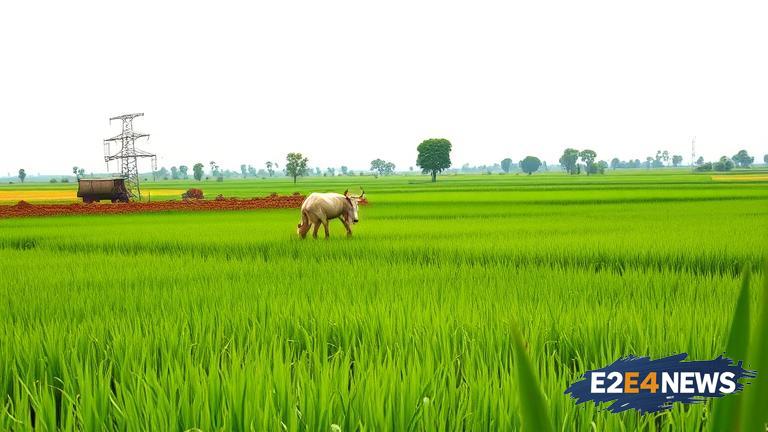Nigeria’s paddy production has experienced a significant decline in recent times, and this trend is attributed to several factors. One of the major reasons is the flooding that has occurred in various parts of the country, which has resulted in the destruction of paddy fields and the loss of crops. Additionally, the high cost of inputs such as fertilizers, seeds, and labor has made it difficult for farmers to produce paddy at a profitable rate. The insecurity in some parts of the country has also contributed to the decline in paddy production, as farmers are unable to access their farms due to the fear of attacks. The Nigerian government has been working to address these issues, but the decline in paddy production has had a significant impact on the country’s rice industry. The demand for rice in Nigeria is high, and the decline in paddy production has led to an increase in the importation of rice. This has resulted in a significant amount of foreign exchange being spent on rice imports, which could have been used to boost the local economy. The decline in paddy production has also affected the livelihoods of farmers and other stakeholders in the rice value chain. Many farmers have been forced to abandon their farms due to the high cost of production and the lack of security. The Nigerian government has introduced several initiatives to boost paddy production, including the provision of subsidies on inputs and the establishment of irrigation schemes. However, these initiatives have not been enough to address the decline in paddy production. The government needs to do more to address the issues of flooding, high input costs, and insecurity in order to boost paddy production. The private sector also has a role to play in addressing these issues, and there is a need for more investment in the rice industry. The use of technology, such as drones and satellite imaging, can help to improve paddy production by providing farmers with accurate information on weather patterns and soil conditions. Additionally, the adoption of climate-resilient crop varieties can help to reduce the impact of flooding on paddy production. The Nigerian government also needs to work with neighboring countries to address the issue of insecurity, which is a major challenge to paddy production. The government can also establish a price stabilization mechanism to ensure that farmers receive a fair price for their produce. Furthermore, the government can provide training and extension services to farmers to improve their productivity and efficiency. The decline in paddy production has also highlighted the need for Nigeria to diversify its economy and reduce its dependence on oil exports. The government can achieve this by investing in other sectors, such as agriculture and manufacturing. In conclusion, the decline in paddy production in Nigeria is a complex issue that requires a multifaceted approach to address. The government, private sector, and other stakeholders need to work together to address the issues of flooding, high input costs, and insecurity in order to boost paddy production and improve the livelihoods of farmers and other stakeholders in the rice value chain. The Nigerian government needs to take a holistic approach to address the decline in paddy production, and this includes investing in irrigation schemes, providing subsidies on inputs, and establishing a price stabilization mechanism. The government also needs to work with neighboring countries to address the issue of insecurity, and provide training and extension services to farmers to improve their productivity and efficiency. With the right policies and investments, Nigeria can increase its paddy production and reduce its dependence on rice imports.
